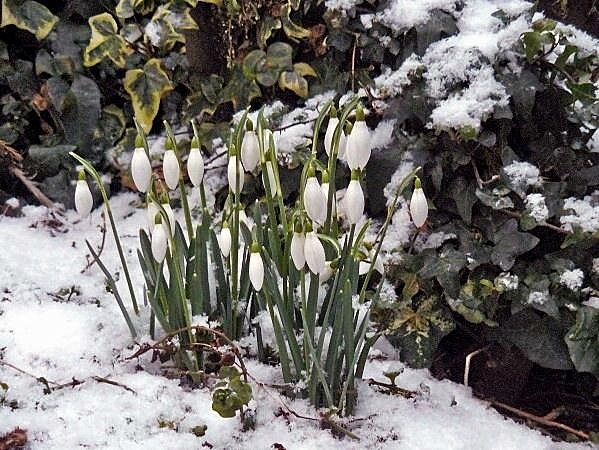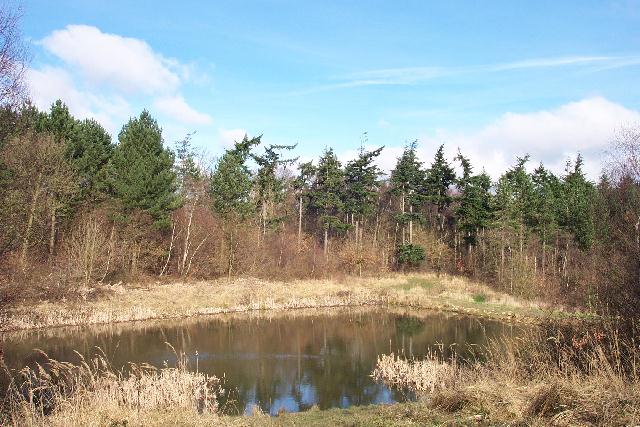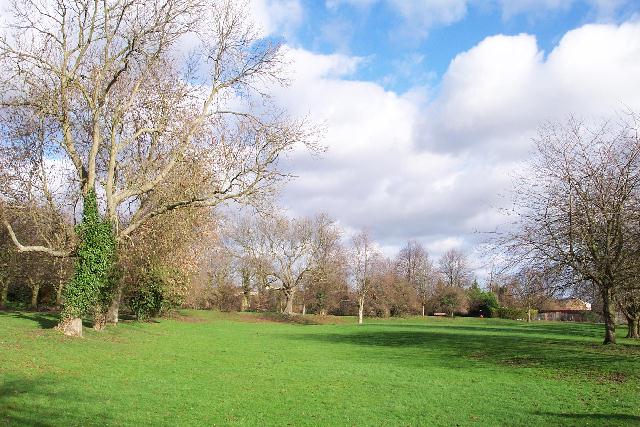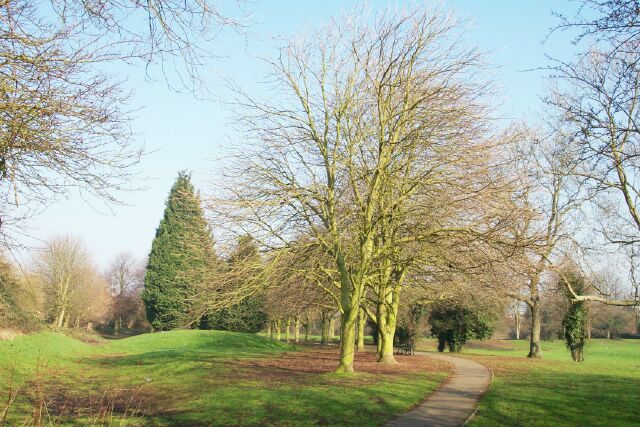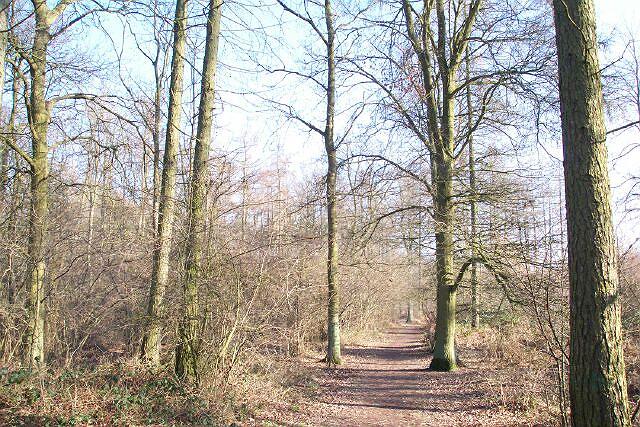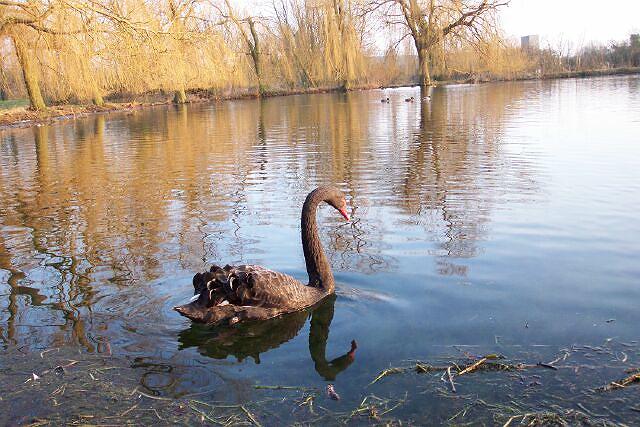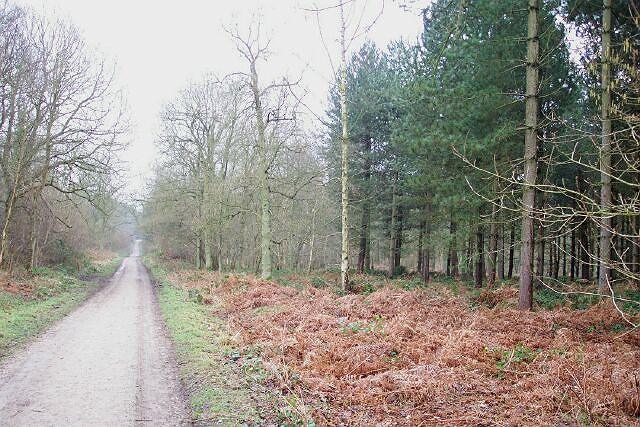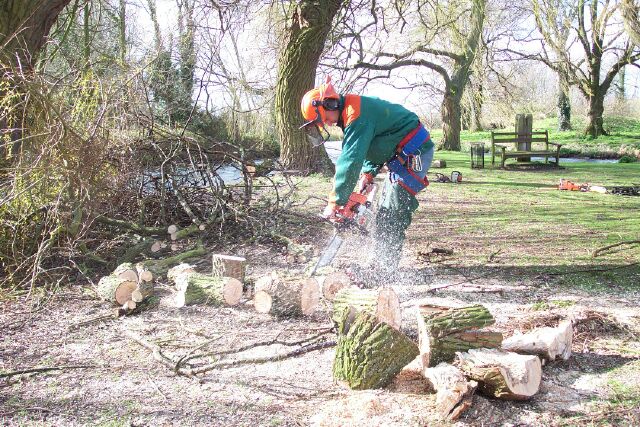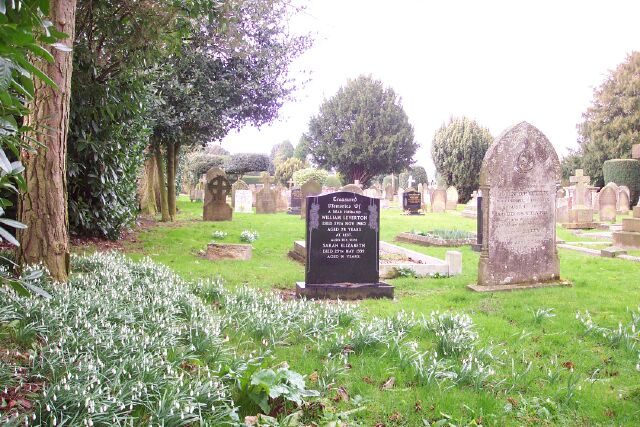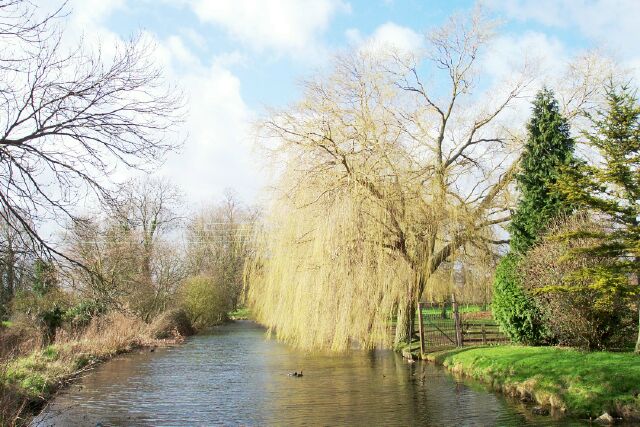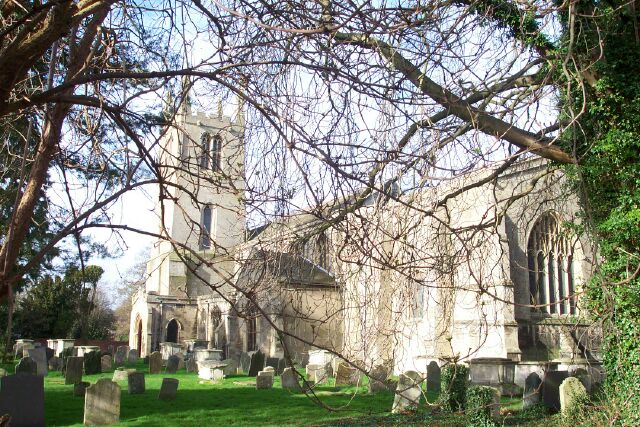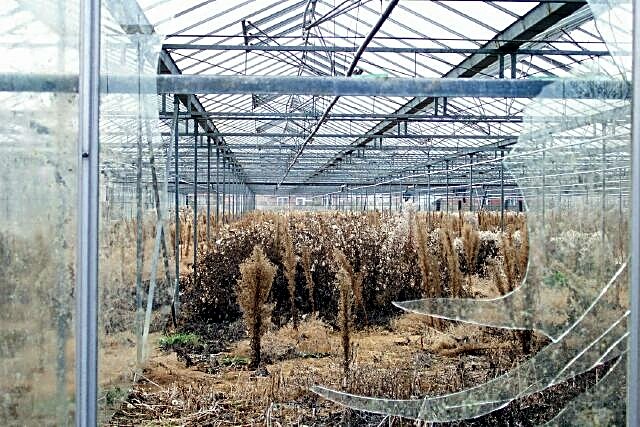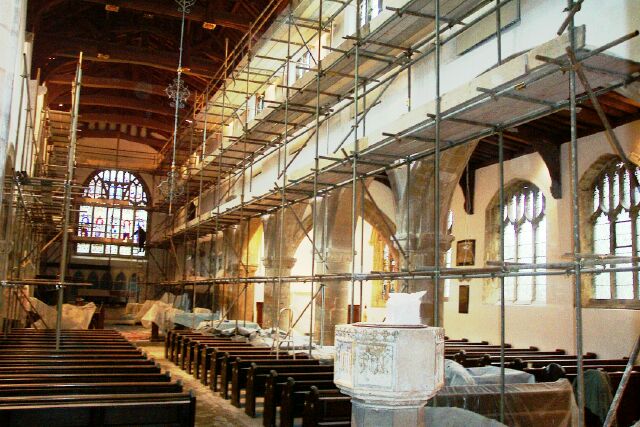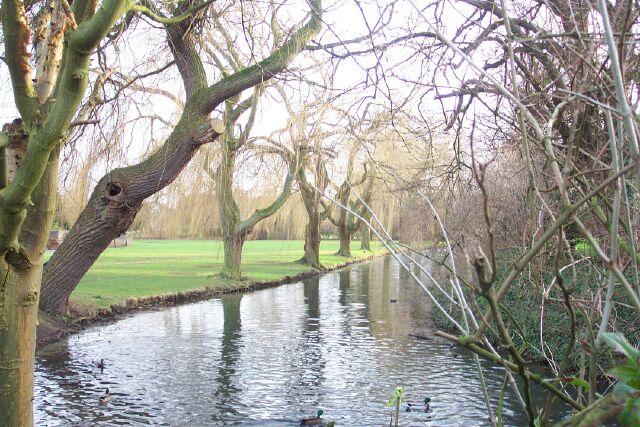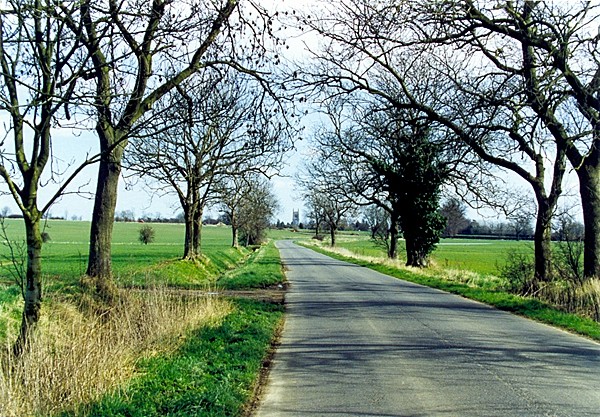|
February
Friday 3rd February 2012: Among the New Year's first signs of life in our gardens and parks are the snowdrops and a large number can always be seen around town, a welcome sight now that the icy conditions of recent weeks are receding. Most are in bloom by February 2nd, also Candlemas Day, from which is derived their less well known name of Candlemas Bells. The 19th century English romantic poet, Percy Bysshe Shelley, wrote: "If winter comes, can spring be far behind?" and so despite the snow and freezing temperatures we anticipate brighter days ahead and the delicate white blooms such as those pictured here in a back garden in Queen's Road are a harbinger of the season of renewal now on the way.
Thursday 5th February 2009: The town awoke this morning to a heavy fall of snow that closed schools, shops and offices, and as the roads were treacherous and the pavements dangerous underfoot, few people ventured out without good reason. The children, however, enjoyed every minute of it, some of the younger ones never having seen snow before, and many neighbourhoods soon featured snowmen and giant snowballs. But for those without vital business to attend to, it was a day at home which is why this photograph is of Stephenson Way and taken from my front door.
Wednesday 18th February 2004: Bourne Wood may appear to be a forlorn place in February but there is plenty to see as the animals and plants prepare for the spring awakening that is just around the corner. Along the side of the well-trodden paths, both leaf litter and moss have been scarified and thrown about as woodland birds such as robins, jays and bluetits forage for food, especially in wet weather which brings grubs and worms closer to the surface. Grey squirrels too are in evidence, scurrying about looking for acorns buried last autumn to see them through the hard time of winter, clumps of daffodils are ready to burst into bloom and amid the trees, the first hazel catkins provide a burst of yellow blooms while here up at the lake, a good walk from the main entrance, there are signs along the edges of deer gathering here for water, leaving their cloven hoof marks in the mud. We are into one of those periods of mild weather for which February is noted and as this week is also the half-term holiday from school, there are more visitors than usual with dozens of children gaily striding out and enjoying the wood with their parents and pets.
Saturday 7th February 2004: One place that is always welcoming in Bourne is the Wellhead Gardens, a spot that is particularly attractive on a sunny day, even in winter. Few small towns of this size can boast an open space within a short walk from the town centre and we should count ourselves lucky that there were men of vision administering our affairs in past times who made this possible. This open space is used most days by people merely walking through to those who come here specially to sit in peace because the traffic on the A15 in South Street is merely a distant rumble and birdsong can be easily heard above it. The large number of birds that can be found here is also surprising, with blackbirds, thrushes, pied wagtails, blue tits and bullfinches very much in evidence and although I have not been lucky enough to spot one myself, I have it on good authority that the green woodpecker often makes an appearance. Amenities like this should be used as often as possible as a mark of appreciation of what we have and to ensure that they are not taken away from us and will remain here for future generations to enjoy.
Tuesday 25th February 2003: Winter in the Wellhead Gardens at Bourne can be as attractive as summer and although its appearance changes with the seasons, there is always plenty of colour, especially on sunny days. The trees for instance, are conspicuous at this time of the year because visibility is less obscured by leaves and so their identification from silhouettes, bark or twigs can be a fascinating pastime. The path to the north east and leading to West Street is lined with red horse chestnuts that bloom with a mass of scarlet candles during May. This tree is a hybrid between our own native horse chestnut and the American red buckeye and is widely planted throughout Britain as an ornamental species, reaching a height in excess of 60 feet, and is a favourite for public gardens and alongside roads. These have been here for almost half a century, ever since 21 acres of meadow were developed for the town by Bourne United Charities as a permanent parkland in the years following the Second World War of 1939-45 and so when we walk in this place, we should be grateful to those who ran our affairs in years past for their foresight in providing such an amenity within the town centre area.
Wednesday 19th February 2003: We woke this morning to another severe frost and as this made it firm underfoot, we headed for the woods, knowing that the muddy paths of previous days would be frozen over and therefore make walking less treacherous, and so it proved. It was a gloriously sunny morning walking briskly along the forest ways was an exhilarating experience. During these outings we are always on the lookout for signs of wildlife which is there in abundance but animals tend to keep a low profile when humans are about and in view of the way they are often treated, who can blame them. There were many birds and the odd grey squirrel scurrying about looking for acorns that had been buried last autumn to see them through the winter and as we were leaving along the main path, we spotted a muntjac, a rare sight these days although many inhabit this woodland. These deer are about two feet high, hump-backed and with tiny antlers and tusks, and their appearance from a distance has made many people believe that wild boar inhabit the woods but such sightings are of these small animals, shy and elusive and difficult to photograph and so I did not even get the chance of a shot but there is always another day.
Monday 17th February 2003: The Wellhead Gardens are a favourite walk on bright afternoons in winter and today we were blessed by a burst of golden sunshine as daylight was drawing to a close. The sun's rays twinkled on St Peter's Pool as we passed and, pausing on the rail simply to take in the scene, mallard, moorhen and black swans swam over expecting a morsel of biscuit or bread but we had brought nothing and made a mental note to do so next time for at this time of the year, waterfowl need all of the food they can get. The black swans are indigenous to Australia and Tasmania and have made their home here since the summer of 1999, producing two or three cygnets each year and although the clutch of three eggs that we had seen on their nest at the water's edge a few days ago have now gone, taken on this occasion by a fox, they are busy mating again. But despite this threat to their welfare, the swans still trust humans and swim towards them whenever they pass by, hoping for a snack or merely because they are curious. It is difficult to believe that St Peter's Pool is only a few steps away from the busy town centre and yet this spot has been a haven of peace and tranquillity for centuries and long may it remain so.
Wednesday 12th February 2003: The countryside appears to be in limbo during February, betwixt and between the seasons, halfway from the snows and frost of winter and the warm days of the coming spring. After many weeks of wet and damp, the main tracks through Bourne Wood have become muddied by walkers but for those who step out bravely there is still plenty to see and you will even notice signs of life from the plants and animals that live there. Hazel catkins, or lambs' tails as they are popularly known, are waving in the breeze and the distinctive marks of cloven-footed fallow deer can be seen in many places and if you are lucky, you will see the odd grey squirrel stirring from its winter sleep and scurrying up and down trees and defying the usual belief that it hibernates the winter long. But despite the time of the year, there is still colour in the woods, the green of the evergreens and the golden brown of the ferns or bracken that are waiting ready to burst into life and to give the undergrowth another coating of green for the coming summer. Despite some brighter days, the month of February is often regarded as being dull and even cheerless, and yet it marks the turning of the year.
Thursday 28th February 2002: High winds have caused many problems throughout England in recent days and here in Bourne several of the weeping willows in the Wellhead Gardens have been damaged. These trees were planted along the banks of the Bourne Eau more than half a century ago and since growing to maturity they have provided a picturesque backdrop to the war memorial with their long, slender shoots brushing the water during the summer months. The gales ripped the upper boughs from a number of them and Brian Hill, a 29-year-old tree surgeon from Spalding, was called in by Bourne United Charities who own the land to make them safe and clear up the debris and his chain saw made short work of the massive branches which were soon transformed into logs ready for someone's fire.
Friday 22nd February 2002: Spring flowers have colonised our graveyards because they have been planted around tombstones over the years by grieving relatives and friends and their growth has been unchecked by over-intensive farming. Snowdrops (Galanthus nivalis) are the first to appear as harbingers of spring, closely followed by primroses, lesser celandines and daffodils, and they provide splashes of colour in what could be a dismal place to visit. Instead, their appearance is an indication of new life amid so much death and if those departed could speak, they would surely welcome this unexpected floral display around their last resting place. Snowdrops are also known as Candlemas Bells because of their flowering time in February (Candlemas is on February 2nd) and I found them in abundance today when I visited Bourne cemetery where conditions are particularly conducive to the snowdrop which readily becomes naturalised and soon spreads over large areas under trees and between graves. Cemeteries such as this, like the churchyards before them, have become a sanctuary for all kinds of wildlife, rather like unofficial nature reserves, and because they contain so many uncultivated plants flourishing undisturbed they well deserve their reputation as God's little acre.
Tuesday 19th February 2002: The weeping willow (Salix x Chrysocoma) is among the first of our trees to herald spring because at this time of the year it starts to sprout new leaves, giving the tree a yellow-green tinge, a sign that winter is almost ended and better days are not far off. This is the Bourne Eau behind Baldock's Mill, a waterway that once fed the mill race when it was grinding corn in past times, but today it provides a habitat for ducks, moorhens and other wildlife and is a relaxing place to walk and welcome the advent of another season. The graceful weeping willow is among the most characteristic of our English landscape, especially near water where it can grow to heights of 65 feet. This tree can however, choke drains, dry out the surrounding area and even threaten the foundations of buildings if planted in suburban gardens, but here on the river bank in a public park, the damp soil provides the perfect environment and by early summer these slender and colourful branches will be cascading over the water and hanging like silken drapes gently brushing on the surface.
Saturday 16th February 2002: Late winter sunshine enhances the mellow stonework of the Abbey Church at Bourne and reminds us that the building has been a bastion of faith in this fenland landscape for almost 900 years. It has withstood the ravages of wind and weather, even abnormally severe storms such as that in November 1571 when the rain was so heavy that some houses in the town became partly submerged and flood water rose halfway up the church walls, yet it still remains the central point of Christian assembly in the parish. This picture was taken on Thursday from the south east corner of the churchyard, one of the few places in the vicinity that gives a near-complete exterior aspect of the tower, nave and chancel, and shows this historic building in all of its splendour. These ancient walls have echoed to the voices of worship down the centuries and despite a world that is becoming increasingly secular, this building is likely to remain a monument to religious belief in centuries to come.
Sunday 10th February 2002: The massive glasshouse complex of E N Moody and Sons Limited has been a landmark in Bourne for more than half a century but is now being demolished. It was here at Woodside Nurseries off Exeter Street that the company perfected the growing of chrysanthemums that were of such high quality that they were transported to shops and markets around the country and the techniques employed by the company attracted the attention of growers throughout the United Kingdom who visited every year to see how it was done. The nursery closed ten years ago and has been standing derelict ever since while the greenhouses that were once filled with colourful blooms have become overgrown and the panes are slowly being smashed by vandals and high winds. In the next few weeks, they will have been pulled down and the six-acre site cleared to make way for an estate of 140 new homes that will be called Hereward Meadow.
Saturday 9th February 2002: The history of our parish churches is dominated by the fight to keep them in good order, to repair and maintain the fabric and to ensure that the building not only survives the centuries but is always a welcoming place for worship. Workmen have been busy over the past month carrying out such tasks in Bourne Abbey where the tools of their trade, such as scaffolding and ladders, have given the interior an unusual look, with dust sheets protecting the old oak pews, paint pots at vantage points, even on the font, and bags of tools at the ready. The tasks now nearing completion are the re-plastering and painting of the walls and glazing repairs to some of the windows, a costly business for a parish where money is never plentiful but a necessary enterprise to ensure that this old building will last for another 1,000 years.
Saturday 2nd February 2002: This backwater in the Wellhead Gardens at Bourne was originally the moat around the old manor house or fortification that is believed to have stood nearby in centuries past and is traditionally known as Hereward's Castle. Until recently, this stretch of water frequently became stagnant with silt and debris and muddy in dry weather but last October, drainage engineers sank a pipeline to St Peter's Pool 200 yards away which enables the water level to be topped up to keep it moving. There is no flow in the waterway at this point but the pipeline can now be activated through a regulating valve rather like a big tap, creating whirlpools that disperse the weeds and debris into the Bourne Eau and from there out into the fen where it can be cleared periodically by mechanical diggers. The result is a clean and smooth flowing river that enhances our public gardens and is thoroughly enjoyed by the ducks and moorhens that live here.
Friday 9th February 2001: The countryside in winter here in South Lincolnshire is often as green as it is in spring because of the modern farming practice of drilling wheat in the autumn and so by February the young shoots have broken through the surface and are looking very healthy indeed. The seasonal cold spell ensures that the plants are hardy and gives the crop greater strength until it is harvested in the summer. The trees however, stand stark and leafless against the skyline on either side of this country road on the outskirts of Kirkby Underwood, five miles north of Bourne, and framing the embattled 15th century tower of the village church at Rippingale in the distance.
Thursday 17th February 2000: A stone structure known as Spur Bridge and dating back several centuries carries the B1176 over the West Glen River south of Careby and alongside is a ford to enable horses and carts in past times, and now heavy farm machinery, cross the waterway. We come this way at least once a week on our way home from shopping trips to Stamford and I am always attracted by the contrasting light and shade on sunny days, especially in winter.
Go to: Main Index Villages Index |
